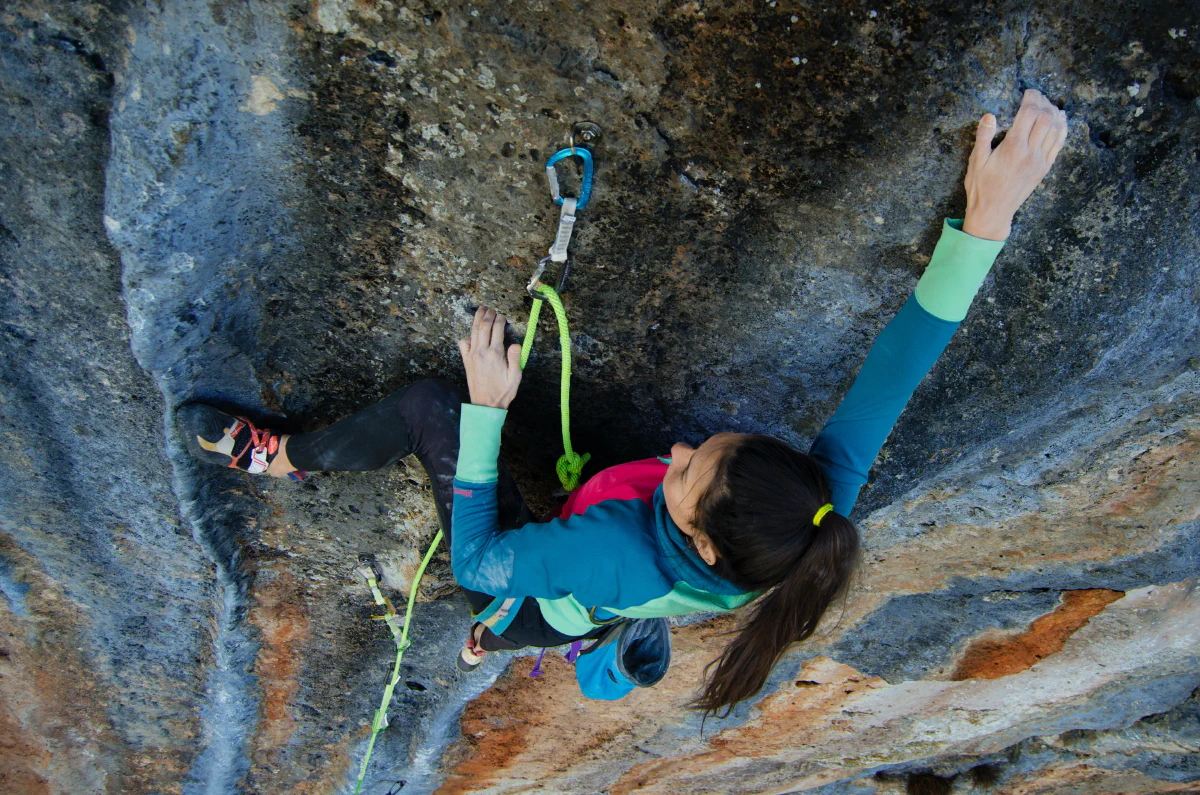Setting OKR Targets and Psychological Safety

Success at 60%?
Someone recently asked me if I agreed with Rick Klau’s statement about setting OKR targets from his, now “classic” (perhaps infamous), 2012 talk about OKRs at Google in which he said “Your target should be a 0.6 to 0.7 on a zero to one scale. If you consistently get ones, you’re not ‘crushing it’, you’re sandbagging.” Do I agree that we should be setting OKR targets so ambitiously that we would be lucky to achieve even 60%?
I love this question.
I love it because it shows how something seemingly simple (levels of ambition for OKR targets) exposes a fundamental truth about how different organisations operate. It speaks to the core of what makes some organisations truly exceptional workplaces (ones where people grow and deliver outstanding results) and what makes other organisations mediocre performers and often miserable places to work.
But first, a quick refresher.
What are “OKR targets”?
I’ve written previously about setting good OKRs. Objectives are the “rocket fuel” that get us out of bed in the morning. They should be big, daring and inspiring, but not necessarily measurable:
By contrast, Key Results are the navigation system that keeps us on course. They’re the “businessy/mathematical” end of our OKRs: highly concrete, easily measurable outcomes that we’ll use to prove we’ve reached our Objective.
Key Results should be SMART with clear, quantitative targets to reach in a specific timeframe (e.g. a calendar quarter):
- Lift 500k people above the poverty line
- Increase quarterly revenue 40%
Even more important than the scope of the outcome (“the OKR target”) is whether we genuinely care about this outcome and want to be asked about it every week for the rest of the quarter. Is this really one of the “key results” by which we should evaluate all our efforts towards a single objective?

How much is enough?
Assuming we’ve managed to pick Key Results which really resonate, how ambitious should they be? Should we set them so high that we’re lucky if we hit even 60%? Is 60% the benchmark of success?
Yes…and…
Yes, of course we should be as ambitious as possible in our goals and truly stretch ourselves…and it’s also vital that we manage perceptions and embrace the current reality of our operating environment so we don’t sabotage ourselves.
Let me explain.
When you first start running, doing yoga, etc. The most important thing is to know your edge and how far you can push yourself without injury or burn-out. OKRs are an opportunity to put your organisation under the microscope, to pick it apart, understand how it works, and find the edge in everything you do.
OKRs are an opportunity to put your organisation under the microscope, to pick it apart, understand how it works, and find the edge in everything you do.
If you have the luxury of working in an organisation with a high degree of psychological safety, where constructive failure is celebrated as an opportunity to learn and grow, where leaders admit their weaknesses and invite criticism, and where curiosity wins out over blame, then you should feel quite comfortable setting highly ambitious (maybe even unreachable) targets. Reach for the stars. Raise the bar. Go nuts.
Unfortunately, most organisations don’t work this way. Yours probably doesn’t, even if you think it does.

“Psychological Safety”?
At work (or anywhere for that matter), psychological safety is critical to allowing people to do their best, to learn and support each other, and (quite often) to prevent catastrophe. It’s what allows people to be free from fear, shame, and guilt so that they speak up, ask difficult questions, and try new things. It’s the basis of both resilience and innovation.
In times of great upheaval and transition (hello, 2020!), psychological safety is vital to the survival of any organisation, social construct, or relationship. Amy Edmondson has written a whole book on the topic and gave this short talk if you’d like a primer.
As Edmondson says in the video above, nobody shows up for work wanting to look “ignorant, incompetent, intrusive, or negative”. We want to be seen as capable, positive, and consistently delivering on our commitments.
Writing in 2003, sociologist Ron Westrum identified three primary organisational types: Pathological, Bureaucratic, and Generative. Pathological organisations are marked by low coöperation, low responsibility, “blamestorming”, and nonexistent innovation. At the opposite end, generative organisations are marked by high coöperation, learning from mistakes, and implementing novel approaches.
The thing is, innovation requires risk and risk usually involves some degree of failure along the way. The only way to guarantee 100% “success” 100% of the time is to follow an established process to the letter and give up on innovation.
A line cook will rarely make a bad omelet 🍳 but a bold chef will very often come up with disastrous recipes on the way to creating something groundbreaking and delightful. Thomas Edison famously tried thousands of different materials before landing on a tungsten lightbulb filament. Between 2008 and 2010 the Google Chrome team repeatedly set (and “failed” to achieve) audacious stretch goals for weekly active users starting at 20 million and eventually achieving 111 million weekly active users.1
I have not failed. I’ve just found 10,000 ways that won’t work.
– Thomas Edison
What to do?
If you find yourself in a pathological or bureaucratic organisation with low psychological safety, OKRs can still be a useful tool for self-knowledge and improvement across the organisation. If teams are under pressure to deliver at (or near) 100%, you can simply scale your ambitions accordingly.
Imagine that you have a big “dial” next to your Key Result targets. In an ideal world, you’d start with 50/50 confidence. In other words, you’d pick targets which get you “uncomfortably excited” (to quote Larry Page)1. In your world, you might have to dial down your ambition so that you can get closer to 100% and manage the optics around what you can do. Maybe it’s not a 40% increase in revenue, but a 25% increase…or less. If you need to turn down the heat while your teams get comfortable with OKRs, do it.

Wait, what?!
I know: I’m telling you to ignore all the OKR literature out there, even John Doerr, himself… but above all, I’m a pragmatist.
If people are being pushed too hard to “aim high” and “be ambitious” and it becomes a question of losing face in a scary environment, people will either reject OKRs outright or pick Key Results that don’t actually matter and just pay lip service to the practice while it slowly dies on the vine and actually damages the organisation’s ability to innovate (by eroding trust in leadership and appetite for risk).
What about OKR grading?
In addition to scaling ambition to fit a bit more in the “comfort zone”, the other important piece of behaviour is what happens during the grading process. This is where leaders can truly flex the power of OKRs and use the opportunity to create greater safety.
In the video above, Amy Edmondson gives 3 simple ways to improve psychological safety:
- Frame the work as a learning problem, not an execution problem
- Acknowledge your own fallibility
- Model curiosity (ask lots of questions which creates a necessity for ‘voice’)
How does this look in the context of grading OKRs?
- Remember that every OKR is a scientific experiment, not a task to complete
- Be ambitious in your own goals and celebrate when you come up short and learn something in the process
- Ask powerful questions. What didn’t work? What will we do differently? Make sure you can answer these 😄
In this way, we use OKRs to explore and understand reality, not to control it. It strengthens our foundations and operating position, ultimately enabling far greater outcomes.

Keep your eyes on the prize
Remember that OKRs are a continuous improvement framework, designed to help your teams understand reality and, ultimately, to work better together and deliver stronger outcomes. This takes time.
In practice, this means that you may, initially, be delivering Key Results to 80-100% (or even above 100%) of target and as the environment becomes more “safe” (and transparent), you can become more ambitious and begin to deliver your Key Results at 60-70% of your Key Results. This requires care and lots of buy-in and communication from the top since, optically, it looks like teams are actually delivering less. In reality, they’re probably delivering much more.
Ideally, teams would model this behaviour across the entire organisation. If not, you may find yourself acting as a team which appears to deliver less than the other teams but which has far more challenging goals. This is tricky but worthwhile work which can give other teams permission to stretch as long as they have support of leadership. Tread carefully, know the context, work closely with other teams and make sure you’re ready to be a trailblazer.

As Ken Schwaber says “A dead sheepdog is a useless sheepdog.” Like anything transformative, adopting OKRs requires great sensitivity. The most important thing you can do while adopting OKRs is to understand reality. Used well, OKRs are the most powerful tool there is for understanding how your organisation works, how the environment around your organisation works and where you have the greatest leverage for change.
In other words, know your audience, don’t scorch your OKR implementation by insisting that people move too far out of their comfort zones. Be patient. Remember that OKRs are there to serve your organisation in the most holistic sense. OKRs should enhance psychological safety. It will vary for every team and individual but find your edge, figure out exactly how far to push, and, above all, be sensitive.
How do you find your edge in a safe way? How much should you push? Get in touch below and let me know!


